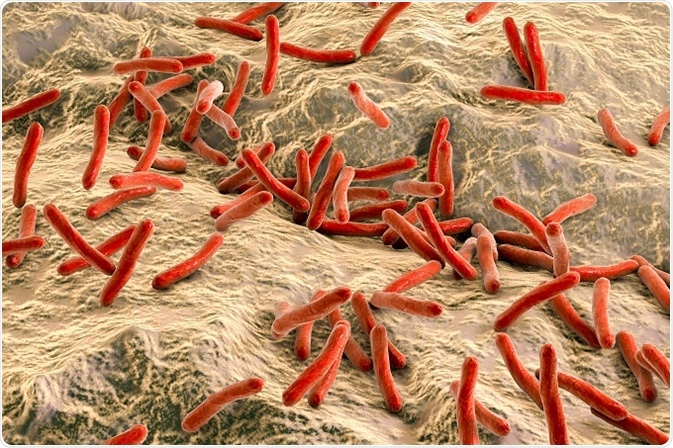Leprosy has historically been a dreaded skin disease caused by Mycobacterium leprae, which has been associated with ostracism, poverty, and progressive disabling disfigurement. However, there have always been some famous public figures that were also lepers, yet reached distinction with this great handicap.

3D illustration of Mycobacterium leprae bacteria ©Kateryna Kon / Shutterstock.com
Some of them were Otani Yoshitsugu (a 16th century Japanese hero), a poet Nguyễn Trọng Trí, king Baldwin IV of Jerusalem, and the only voluntary leper of them all, Father Damien of Molokai.
Otani Yoshitsugu
Born in 1559, Otani Yoshitsugu became a trusted lieutenant of Toyotomi Hideyoshi, the daimyo (feudal lord) and chief Imperial minister who was deeply involved in the unification of Japan begun by another daimyo, Oda Nobunaga.
He is legendary in Japan for two reasons: namely, his leprosy and his tenacious friendship with Ishida Mitsunari. Ishida was, with Yoshitsugu, one of the three generals who commanded the ill-fated Japanese campaign in Korea. The story goes that once during a secret tea party where all shared the same tea cup, pus from an ulcer on Yoshitsugu’s face fell into the cup. Though others in the circle showed revulsion at having to drink from the cup after this, Mitsunari is said to have not only calmly accepted the drink but to have drained the cup, praising the tea.
In return, Yoshitsugu stood fast with Mitsunari at the battle of Sekigahara, though almost blind and very ill at the time. Having tried in vain to persuade his friend of the folly of the battle, he finally gave in to the call of his friendship and joined him. As they faced treachery and were badly outnumbered, he fought back valiantly, but finally lost the battle. He killed himself when his faithful retainer finally told him that they had lost.
Nguyễn Trọng Trí
Another famous figure is Nguyễn Trọng Trí, who wrote under the name Han Mac Tu. Born in 1912, he died early, in 1940. He was a Catholic and a poet of the colonial era. He grew up poor, and without a father. His versification showed itself when he was still a boy. Fortunately, he came under the notice of the better-known literary figure Phan Boi Chau, who praised and encouraged him, bringing him into the public eye.
Nguyễn Trọng Trí wrote many love poems as well as poems based on folk lore, which are still popular today. However, he became a leper in 1937, and according to the practice of the time, was sent to Quy Hoa hospital in 1940. He survived only two months there.
Baldwin IV of Jerusalem
Another great leper was King Baldwin IV, who lived during the Crusader era, as King of Jerusalem. He developed leprosy while still young, and the anesthesia which afflicted his right hand and arm was described graphically by his tutor. Though treated with all the physic of his time, he could not be cured.
Symptoms of leprosy were all too evident, and both the face and the limbs bore the marks. As King, he suffered greatly, becoming blind and developing severe ulceration of the extremities, which rendered him unable to stand or handle things. Finally he died at the age of 24, in 1185 AD. His sickness undoubtedly contributed to the rise of various factions among his noblemen which led to the weakening of the kingdom and permitted the sweeping conquests of Saladin.
Father Damien of Molokai
Greatest among the lepers of history is possibly the only voluntary leper of them all, Father Damien of Molokai. Born Joseph de Veuster in 1840 (in Belgium), he sailed for Hawaii in 1863, in the place of his brother Father Pamphile who had fallen ill. In 1864 hehttps://www.trentu.ca/ became a priest.
At the time, the Hawaiian government moved all lepers to the isolation camp at Kalapapa on Molokai. Touched by the helpless and lonely condition of the lepers there, he elected to take oversight of the leper camp. He served as priest, doctor, administrator, and orphanage founder. He spent a total of 16 years there, mostly alone.
In 1884 he discovered that he had developed signs of leprosy, which he bore with his characteristic equanimity. He refused to be treated since that would have meant he had to leave his flock; therefore he died in 1889 and was buried there. In 1936 his remains were reburied in Leuven, and in 2009 he was declared a saint by the Roman Catholic Church.
References
Further Reading